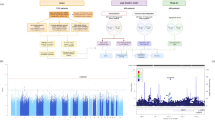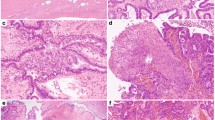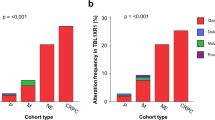Abstract
Forty-nine ovarian tumours were examined for loss of heterozygosity (LOH) on chromosome 5 using eight microsatellite markers spanning both arms, including one at the APC locus. LOH on 5q was a frequent event, detectable in 23 of 49 (47%) tumours, whereas 5p LOH was detected in only 1 of 22 tumours (5%). Six tumours showed partial LOH on 5q, enabling the candidate region to be localised to a 22 cM region proximal to APC, flanked by D5S424 and D5S644. An association was found between 5q LOH and TP53 mutation, with 18 of 23 (78%) tumours with LOH on 5q also harbouring a TP53 mutation. LOH on 5q was observed in 6 of 18 (33%) stage I tumours, suggesting that it may be an early event in the molecular pathogenesis of certain ovarian carcinomas.
This is a preview of subscription content, access via your institution
Access options
Subscribe to this journal
Receive 24 print issues and online access
$259.00 per year
only $10.79 per issue
Buy this article
- Purchase on Springer Link
- Instant access to full article PDF
Prices may be subject to local taxes which are calculated during checkout
Similar content being viewed by others
Author information
Authors and Affiliations
Rights and permissions
About this article
Cite this article
Tavassoli, M., Steingrimsdottir, H., Pierce, E. et al. Loss of heterozygosity on chromosome 5q in ovarian cancer is frequently accompanied by TP53 mutation and identifies a tumour suppressor gene locus at 5q13.1-21. Br J Cancer 74, 115–119 (1996). https://doi.org/10.1038/bjc.1996.324
Issue Date:
DOI: https://doi.org/10.1038/bjc.1996.324
This article is cited by
-
Unexpected frequency of genomic alterations in histologically normal colonic tissue from colon cancer patients
Tumor Biology (2016)
-
Frequent loss of heterozygosity at the DNA mismatch-repair loci hMLH1 and hMSH3 in sporadic breast cancer
British Journal of Cancer (1999)



